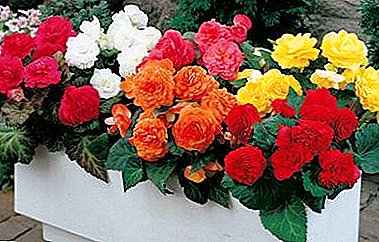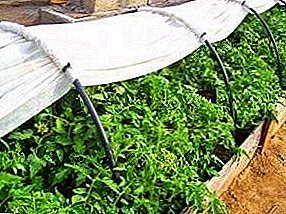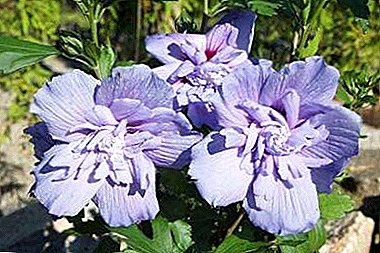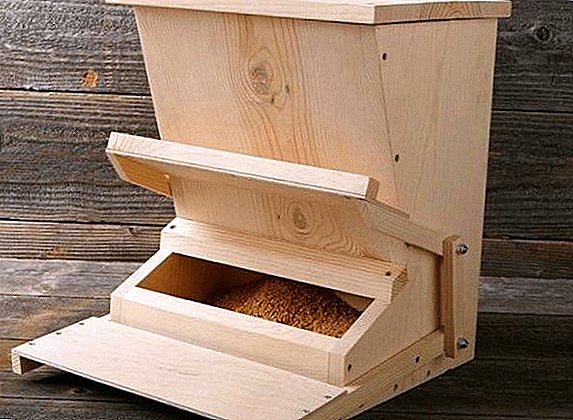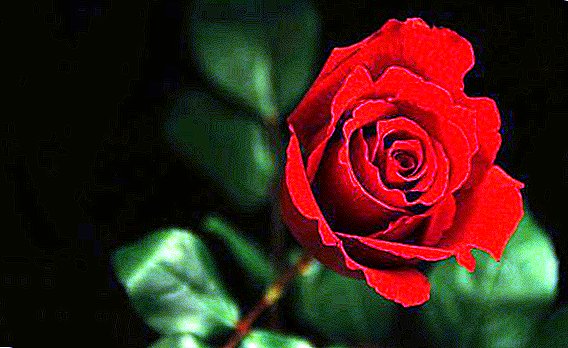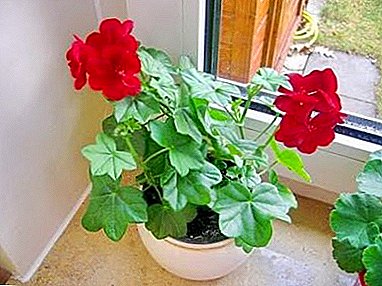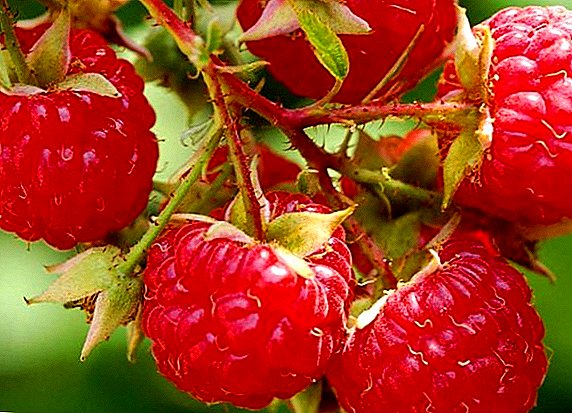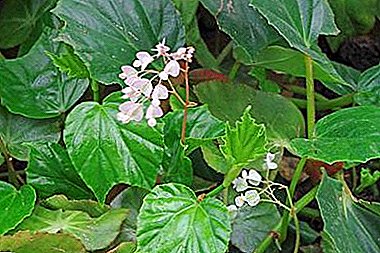
Naked begonia is the most modest representative of its kind. The plant looks exquisitely in garden plots, in greenhouses and winter gardens, in office and residential premises. Grow herbaceous plant as ampelnoy plant.
How this flower looks like, what botanical features it has, as well as where and how to plant this plant and how to look after it after planting for its successful growth, you will learn from this article. Also here is described in detail about the methods of reproduction of this herbaceous culture and its common diseases.
Origin and Botanical Description
Homeland naked begonias - the tropics of Central and South America. It grows on the moss-covered tree trunks on the rocks. This representative of the flora easily adapts to local climatic conditions, is distinguished by unpretentiousness.
The length of the shoots reaches 50 cm. The leaves are shiny, bare, oval-shaped. Pointed at the top, jagged at the edges. Leaves grow on both sides of the stem in the same plane.
Appearance and features
Naked begonia is characterized by creeping bare shoots.that rooted in knots. The leaves are light green, grow on short petioles (2 cm). The length of the sheet plate is 9 cm, width - 7 cm. Features of the plant:
- Small flowers in white.
- Male flowers have 4 petals, female flowers - 5.
- Inflorescence drooping, many-flowered, racemose.
- Reddish petioles.
- Bare peduncle 8-10 cm long.
Reference! Male flowers in begonias naked much smaller than women.
Blooms naked begonia from January to April.
Where and how to plant?
Lighting and location
 When cultivated in the open field choose light areas, well protected from direct solar exploration.
When cultivated in the open field choose light areas, well protected from direct solar exploration.
Begonias are contraindicating the scorching rays of the sun - their tender leaves are subject to burns.
When growing begonias naked as a houseplant at home, windows shade from UV streams.
Potted flowers feel comfortable on the western and eastern window-sills, where the sun is not as bright as on the southern windows, but lighter than on the north.
Soil requirements
Begonias need a light, fertile soil. Ready-made substrates are available for sale that include perlite and peat. You can make your own soil mix. To do this, mix:
- sand 1.5 part;
- turf 1 part;
- leaf land 2 parts;
- peat 0.5 parts.
The level of soil acidity is not more than 6pH.
Landing rules
Begonia seedlings are placed on the garden plot not earlier than the beginning of June.. Before planting in open ground (for 6-7 days), planting material is quenched. It is placed in a bright room, observing the temperature regime: during the day + 23-27 degrees, at night up to +15 degrees.
Landing Algorithm:
- Make holes for each plant at intervals of 20-35 cm (based on the size of the seedling).
- Carefully place the bushes in the landing holes.
- Sprinkle the base of the stem with earth.
- Top ash mulch.
If the begonia is planted at home in pots, then they should be with drainage holes. Before using the tank is washed, disinfected with potassium permanganate, rinsed and dried. Next, perform the following actions:
- The drainage layer is laid on the bottom of the pot: broken brick, expanded clay or pebbles. Drainage should occupy a third or a quarter of the pot.
- Top poured substrate.
- Place the sapling and fill the free space with earth.
For begonias use wide, but shallow pots.
How to care?
Herb culture growing at home loves consistency. Do not rearrange containers with flowers. It is better to immediately identify a comfortable place. That the bush was correctly formed, it is periodically turned.
Temperature and humidity
 Begonias feel good at temperatures from +18 to 20 degrees. Summer and withstand higher temperatures. In winter, the thermometer should be at least +15 degrees.
Begonias feel good at temperatures from +18 to 20 degrees. Summer and withstand higher temperatures. In winter, the thermometer should be at least +15 degrees.
Begonias need to maintain constant humidity.. They irrigate only the air around the flower, but not the leaves. You can install a tray with a pot on a tray with wet moss or expanded clay.
In winter, hot batteries are covered with a wet towel. This contributes to an increase in air humidity.
How to water?
Houseplants prefer measured watering. Need to focus on the state of the soil layer. If it shrinks 15 cm, then begonia requires moisture.
Watering features:
- Moisten at least 2 times a week in the phase of active growth and flowering.
- In the autumn, the intervals between watering increase.
- In winter, moisture is reduced.
Water for begonias should be at room temperature, clean and soft.
Liquid from the tap can not be used immediately. It is necessary to filter or boil, defend for at least a day.
It is advisable, after watering, to loosen the top layer of soil by 1 cm when the ground dries.
Fertilizers
Barely begonia during the growth period is fed twice a month with sodium humatewith high nitrogen content. As they develop, mineral fertilizers are applied once a month. From the moment of flowering, the culture is fertilized with potassium-phosphorus mixtures. This will positively affect the increase in the number of buds and prolong flowering.
Open field maintenance
- Begonia growing on the garden plot is watered regularly and abundantly, especially in dry weather.
- Make additional feeding, alternating mineral and organic fertilizers.
- They fight weeds, loosen the soil.
- With the onset of frosts, a deciduous culture is dug, put in a pot and kept in room conditions.
Common diseases and pests
 As a result of excessive irrigation and humid air, the lack of moisture in begonias develop various diseases:
As a result of excessive irrigation and humid air, the lack of moisture in begonias develop various diseases:
- Gray rot. On the leaves, the tops of the shoots appear white spots with a gray bloom. Treatment: treatment with 1% solution of Bordeaux mixture.
- Mealy dew. Sheet plates are covered with white bloom. Treatment: spraying fungicide.
- Bacterial spotting. On the underside of the sheet, watery spots are formed. The disease is not cured. The affected copy is destroyed.
On begonias can attack aphid, pseudo-shield or spider mite. To combat pests use drugs: Karbofos, Atellik, Derris, Decis.
Breeding features
It is easy to propagate bare begonia with stem cuttings in the soil or in water, as well as leaves. Cutting is the most reliable way to grow a new flower.
Sequencing:
- Cut off a strong, healthy stem length from 8 to 12 cm.
- The stalk is divided into parts, if you need to get a few plants. Each fragment should have at least 2-3 buds.
- From the shoot, leaves, buds and flowers are removed. At the top leave 1 or 2 leaves.
- Planting material is placed in water for rooting.
Cuttings put in a place protected from direct sunlight with a temperature regime of + 20-22 degrees. After the appearance of roots 1-2 cm in length, shoots are planted in a specially prepared substrate.
Several new begonias are grown from one leaf.
- On the maternal flower find the largest leaf. It is cut off with a blade or a sharp knife.
- On the horizontal surface of the sheet is divided into segments. In each must be at least one streak.
- River sand is poured into a box or pot and watered.
- Fragments of sheets laid out on the surface of the sand.
- Capacity with planting material covered with polyethylene and put in a bright place.
- So that the soil does not dry out, it is periodically moistened with a spray bottle.
- Young plants are planted in pots after 3 months.
Deciduous begonias are grown from seeds.
Planting material can be sown one by one. in peat tablets.
Rules:
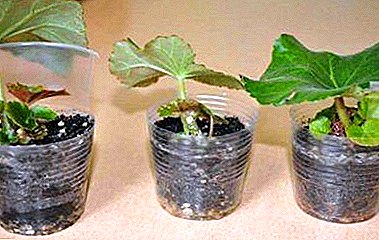 Landing is made at the end of February in the prepared soil.
Landing is made at the end of February in the prepared soil.- Seeds are not covered with earth.
- From above create a greenhouse: cover with a film or glass and put on the illuminated window sill.
- Land with seedlings periodically sprayed.
- When the seeds sprout, the coating is removed for hardening of seedlings. Over time, the greenhouse is removed.
- After the appearance of 2-3 young leaves, seedlings are transplanted into a large container.
- After 2 months, begonias dive into pots or vases.
- In the spring when transplanting a large bush can be divided into 2 parts and planted in pots.
In order for naked begonia to grow and develop well, you need to follow simple rules of care, provide comfortable conditions for keeping: do not place under the scorching sun and in a very shady place, take measures to combat diseases and pests.


 Landing is made at the end of February in the prepared soil.
Landing is made at the end of February in the prepared soil.